Themed collection Molecular systems for sensing

Introduction to molecular systems for sensing
Stefania Tanase and Anastasios J. Tasiopoulos introduce the Molecular Systems Design & Engineering themed collection on molecular systems for sensing.

Mol. Syst. Des. Eng., 2020,5, 1022-1023
https://doi.org/10.1039/D0ME90020F
CO2 sensing under ambient conditions using metal–organic frameworks
Determining accurately CO2 levels is highly relevant when monitoring indoor air quality.

Mol. Syst. Des. Eng., 2020,5, 1071-1076
https://doi.org/10.1039/D0ME00004C
Improving the Cd2+ detection capability of a new anionic rare earth metal–organic framework based on a [RE6(μ3-OH)8]10+ secondary building unit: an ion-exchange approach towards more efficient sensors
A new family of microporous anionic rare earth (RE) MOFs based on a hexanuclear (RE)6 secondary building unit along with a post-synthetic ion-exchange method to enhance the metal ion sensing capability of anionic MOFs are reported.
![Graphical abstract: Improving the Cd2+ detection capability of a new anionic rare earth metal–organic framework based on a [RE6(μ3-OH)8]10+ secondary building unit: an ion-exchange approach towards more efficient sensors](/en/Image/Get?imageInfo.ImageType=GA&imageInfo.ImageIdentifier.ManuscriptID=C9ME00176J&imageInfo.ImageIdentifier.Year=2020)
Mol. Syst. Des. Eng., 2020,5, 1077-1087
https://doi.org/10.1039/C9ME00176J
N,N′-Bis(L-alanine tert-butylester)-3,4:9,10-perylene diimide molecule for volatile organic vapor detection
Langmuir–Blodgett (LB) thin films were prepared using an N,N′-bis(L-alanine tert-butylester)-3,4:9,10-perylene diimide derivative to determine the optimum thin film forming conditions and their sensing properties towards volatile organic vapors.
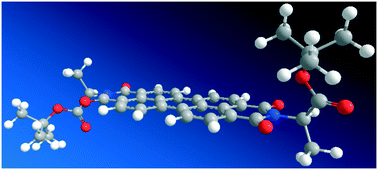
Mol. Syst. Des. Eng., 2020,5, 1057-1070
https://doi.org/10.1039/D0ME00010H
Luminescent MOF crystals embedded in PMMA/PDMS transparent films as effective NO2 gas sensors
Transparent polymeric matrices serve as efficient platforms to immobilize Tb(BTC) crystals whose fluorescence is quenched in the presence of NO2.
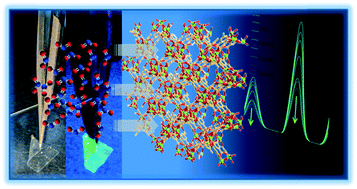
Mol. Syst. Des. Eng., 2020,5, 1048-1056
https://doi.org/10.1039/C9ME00164F
Selective chemical adsorption of Cd(II) on silica covalently decorated with a β-ketoenol-thiophene-furan receptor
Nowadays, porous hybrid materials are considered as potential reservoirs of metallic species in environmental clean-up technologies.
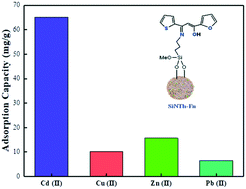
Mol. Syst. Des. Eng., 2020,5, 1037-1047
https://doi.org/10.1039/C9ME00140A
Increased binding of thiophene-based ligands to mercury(II) with water solubilizing functional groups
Ratiometric absorption and emission response to mercury(II) is observed for pyridyl-thiophene ligands with water-solubilizing groups that increase binding affinity and demonstrate thiophene–metal interactions.
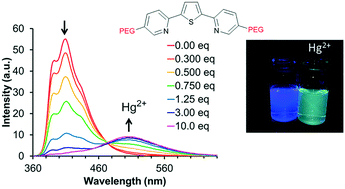
Mol. Syst. Des. Eng., 2020,5, 1024-1036
https://doi.org/10.1039/C9ME00055K
Anchoring and packing of self-assembled monolayers of semithio-bambusurils on Au(111)
Self-assembled monolayers have been formed of semithio-bambusurils that undergo conformational changes to direct all S atoms to the gold surface.
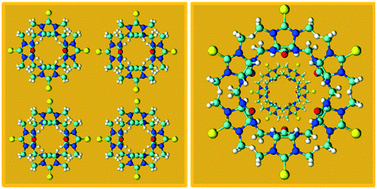
Mol. Syst. Des. Eng., 2020,5, 511-520
https://doi.org/10.1039/C9ME00149B
Specific recognition of toxic allyl alcohol by pore-functionalized metal–organic frameworks
Two rationally designed MOFs were reported for the luminescent detection of toxic allyl alcohol selectively over other small alcohols.
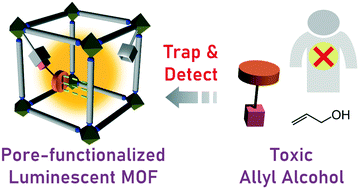
Mol. Syst. Des. Eng., 2020,5, 469-476
https://doi.org/10.1039/C9ME00133F
Unravelling the mechanism of water sensing by the Mg2+ dihydroxy-terephthalate MOF (AEMOF-1′)
The amorphous compound [Mg(H2dhtp)(H2O)2] 1′ was shown to be a highly efficient and reusable luminescent sensor for the detection of water in THF, due to its transformation to the strongly emissive complex [Mg(H2dhtp)(H2O)5]·H2O 1.

Mol. Syst. Des. Eng., 2020,5, 461-468
https://doi.org/10.1039/C9ME00098D
About this collection
From MSDE
Guest Editors: Professor Stefania Tanase (University of Amsterdam) and Professor Anastasios Tasiopoulos (University of Cyprus)
Hybrid inorganic-organic sensing materials have emerged as a new research field that exploits the interaction between the inorganic and organic components. It allows modulating the materials structure to enhance their selectivity towards a target analyte, and to tune the interplay between structure and properties. These materials can be miniaturized and processed at nanoscale, thereby having the potential for device integration.
This collection of papers features research highlighting the potential of hybrid inorganic-organic materials for sensing applications.